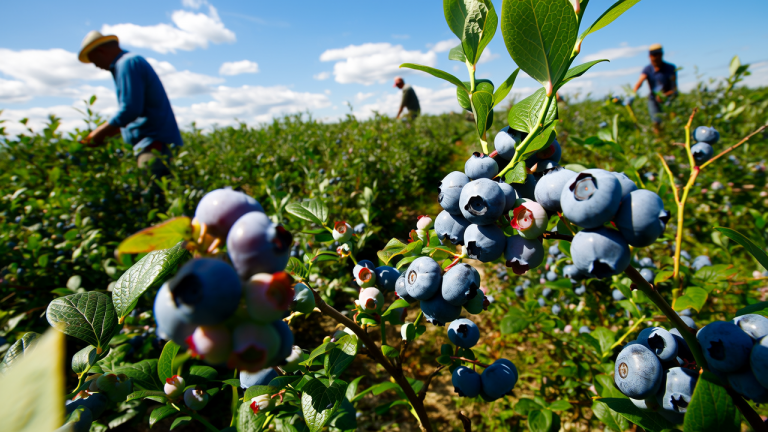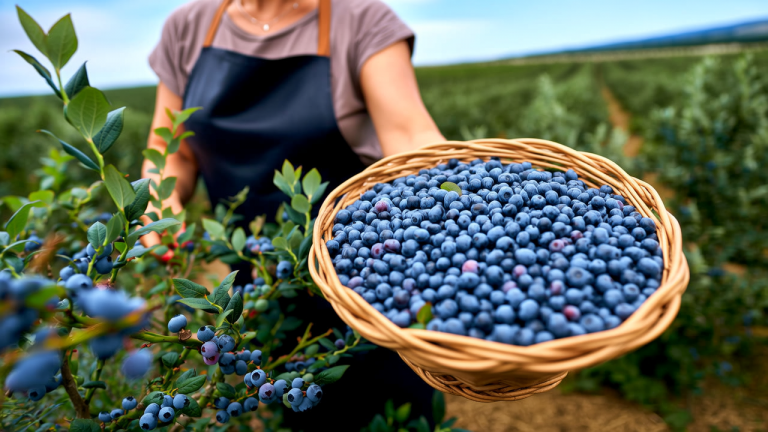Blueberry Planting Boutique Guide
Introduction: Mastering Blueberry Cultivation
(Blueberry Planting Boutique Guide) – Blueberry farming presents unique challenges that require specialized knowledge to overcome. According to the US Highbush Blueberry Council, global blueberry production has increased by 58% since 2010, yet many growers struggle with acidic soil management and nutrient optimization. This comprehensive guide combines the latest research from leading agricultural institutions with practical field-tested solutions.
NO.1: Critical Challenges in Blueberry Production
1. Soil Acidity Management
Blueberries thrive in pH 4.0-5.2 soils, yet maintaining this range proves difficult:
- 72% of commercial blueberry farms show pH fluctuations beyond optimal range (University of Georgia Extension)
- Aluminum toxicity affects root development in 43% of acidic soils
2. Nutrient Deficiency Patterns
Key micronutrient challenges include:
- Iron deficiency causes chlorosis in 65% of alkaline soil plantations
- Magnesium shortages reduce fruit size by 30-40%
3. Climate Stress Factors
- Drought stress during fruit set reduces yields by 50-70%
- Excessive rainfall increases root rot incidence by 300%
NO.2: Precision Nutrition Program
1. Soil Preparation Protocol
- Apply sulfur (500kg/ha) 6 months before planting to lower pH
- Incorporate acidic peat moss (20% by volume) for organic matter
- Use our compost activator to transform local organic waste into suitable amendment
2. Vegetative Growth Phase
- 30-10-10+TE water-soluble fertilizer (200kg/ha) promotes cane development
- Fish protein liquid (100L/ha) enhances root branching by 45%
- Humic acid granules improve nutrient retention in sandy soils
3. Flowering and Fruiting
- 10-40-10+TE boosts flower initiation by 35% (Michigan State University Extension)
- MKP foliar spray (0-52-34) at fruit set increases berry size by 20%
- Calcium-magnesium blend prevents 90% of fruit cracking
NO.3: Integrated Pest Management
1. Disease Prevention
- Trichoderma biofertilizer reduces phytophthora root rot by 65%
- Proper spacing (1.2m between plants) decreases botrytis incidence by 40%
2. Insect Control
- Neem oil rotation manages 85% of spotted wing drosophila
- Kaolin clay applications prevent 70% of thrips damage
NO.4: Cost-Benefit Analysis of Production Systems
| System | Establishment Cost ($/ha) | Annual Yield (kg/ha) | ROI (Years) |
|---|---|---|---|
| Conventional | $18,000 | 6,000 | 1:2.1 |
| Improved Nutrition | $22,500 | 8,500 | 1:3.8 |
| Full Premium Program | $27,000 | 12,000 | 1:5.2 |
Data from International Blueberry Organization
NO.5: Global Success Case Studies
1. Peruvian High-Altitude Farm
- Challenge: Poor soil structure and low organic matter
- Solution:
- Compost activator + biochar soil amendment
- 21-21-21+TE balanced nutrition
- Result: 9.2 tons/ha yield (53% above regional average)
2. Polish Organic Operation
- Innovation: Humic acid granules + microbial inoculants
- Outcome: 40% reduction in irrigation needs with 15% larger berries
For commercial growers seeking premium inputs, explore our blueberry-specific formulations.
If you are interested in this article, or have any questions that need to be answered, You can find us at any time through the chat icon in the lower right corner of the webpage. Of course, you can also check out our other social media (such as LinkedIn) to learn more about us.


Functional liquid fertilizer
Functional liquid fertilizer penetrates directly through the cell membrane and quickly
Contains chelated trace elements (such as iron, zinc, boron)
Add seaweed polysaccharide/humic acid to improve crop drought resistance
Amino acid liquid fertilizer promotes 45% increase in flower bud differentiation rate%
Sugar alcohol carrier technology accelerates calcium and boron transportation to prevent blueberry deficiency
